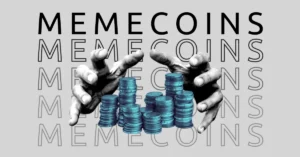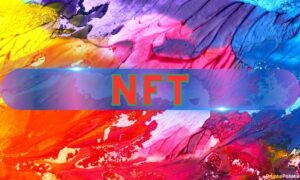The Metaverse, play-to-earn and the new economic model of gaming

[ad_1]

The gaming industry, which has always been synonymous with fun, has grown massively in recent times, and a lot of money is now being mentioned when gaming comes up. Since the introduction of Web 3.0, there has been immense growth in the industry. At the end of 2019, the global gaming market was reportedly worth $152 billion. This growth has meant that, since the introduction of Web 3.0, there has been a consistent rate at which Web 3.0 games are growing and garnering increased adoption. A lot of money is being made, and this has, in turn, attracted a lot of new developers to the space.
Related: Is a new decentralized internet, or Web 3.0, possible?
Gaming in the past has always been a one-sided relationship, where only the developers or owners of a game get the financial gains while players are left to just have fun and keep spending. A new economic model has now been introduced but, in the years leading up to it, players have spent a lot on gaming. In 2020, the mobile applications industry saw customers collectively spend $143 billion. Gaming apps took a huge $100 billion of that amount. This implied that, for every dollar that was spent on the Google Play Store (for Android devices) and the App Store (for Apple devices), gaming apps took a hefty 70% of it. Even with the introduction of the new model of gaming, it is estimated that over $120 billion will still be spent on mobile games in 2021. This will represent a 20% increase from the figures of 2020.
The new gaming model I’ve mentioned twice now is the play-to-earn gaming model. It is no lie that interest in play-to-earn games was sparked by the global COVID-19 pandemic. The same can be said for the virtual worlds or the “metaverses” that these games are hosted on.
Related: Play-to-earn games are the catalyst for this bullish period in the markets
What is the Metaverse?
“Metaverse” is a combination of the prefix “meta,” which means beyond, and “universe.” So, the Metaverse is a world beyond the universe. An otherworldly place, so to speak. In the Metaverse, virtual lands, avatars and even buildings can be bought and sold. This is most often done using cryptocurrencies. In these virtual environments, people can move around freely with their friends, attend events and buy goods and services — basically, doing the exact same things they can do in the real world.
The lockdowns, which were a result of the global pandemic, pushed people to look more into the potential of the online world, and they discovered that they could still do business and have fun at the same time, using their devices from anywhere in the world. Many of the metaverses in existence today are powered by blockchain technology and, to transact on these virtual worlds, a user would need cryptocurrency or nonfungible tokens (NFTs). A lot of the play-to-earn games we have today have their own metaverses with native cryptocurrencies that are used both for transactions and to receive in-game assets and rewards.
Related: New industry, new rules: Building the Metaverse without bias
What are play-to-earn games?
The play-to-earn gaming model embraces the idea of an open economy and financially rewards every user who adds value by playing and spending time in the gaming ecosystem. In the past, the perception about games was that they were just a way of having fun. That perception is changing now as a new class of games are emerging. These games are not only fun, but they are also attractive investment opportunities. Speaking of investments, in recent times, the industry has seen big venture capital firms invest a lot of money into it. As much as $9.6 billion was invested in the global gaming industry in the 18 months leading up to 2019, and 24 blockchain-based gaming companies have seen $476 million in investments in the first half of 2021 alone.
In recent times, play-to-earn games like Axie Infinity and The Sandbox have gained popularity, and one thing they have in common is their economic system. Take the traditional game The Sims for example, where a player can buy in-game assets with the in-game currency — but the currency and assets have no real-world value. This is because there was no infrastructure for liquidity in the game. Another traditional game, World of Warcraft, does have a marketplace where players can buy in-game assets and exchange characters, but it is very unorganised. Blockchain technology in combination with the play-to-earn model has solved all these issues.
Related: Tales from 2050: A look into a world built on NFTs
How do play-to-earn games work?
To explain how play-to-earn games work, I’ll use Axie Infinity as an example. Axie Infinity is a Pokémon-inspired blockchain game created by Vietnamese developer Sky Mavis. It currently has over a million active daily users, and what attracted this large number are the cute in-game creatures called Axies. Users can breed, buy and train these Axies. The Axies are also used to carry out tasks and engage in battles. The goal of the game is to attain an in-game token called Smooth Love Potion (SLP). With SLP, players can breed their Axies, which gives them the advantage of earning more.
Another reason players want to earn as much SLP as they can is that SLP is a cryptocurrency that can be bought and sold on cryptocurrency exchanges. The best-performing players are said to be making up to 1,500 SLPs a day. This is around $250 (because volatility causes the exchange rate to change constantly) at the time of writing. The Axie creatures themselves can be sold as NFTs on an open marketplace. Players can also sell in-game assets like real estate and flowers, among others, as NFTs. So, in this play-to-earn economy of Axie Infinity, players get rewarded for their time by earning SLP, which can be sold on crypto exchanges, and by acquiring Axies and other in-game assets that can be sold in open marketplaces.
Other play-to-earn games
Aside from Axie Infinity, other play-to-earn games and platforms are set to launch, or have already launched, and I see the potential in them.
Bloktopia, backed by Polygon, is a decentralized metaverse that will provide an unprecedented virtual reality experience for the crypto community. The bridge between the virtual and physical worlds within the decentralized and open-source worlds is the Metaverse. Protocols to manage digital value of real estate and digital art will emerge, and NFTs on the Polygon network will act as facilitators for this because of the affordability and fast transactions.
OneTo11 is a fantasy sports mobile application that is geared at providing users with a new way to use their sports knowledge for their general enjoyment and benefit. OneTo11 aims to create a future where sports fans, bettors and gamers can do the things they love most on a revolutionary platform. They get to not only interact socially, but also compete against each other in a transparent and decentralized way. This is a play-to-earn platform that allows users to earn money by taking part in fantasy sports and other games on its platform.
OneTo11 rewards its customer’s loyalty by giving every player the same chance and opportunity to prove themselves and showcase their skills. Players on the OneTo11 platform can earn even without joining the paid contests. This game differs from other play-to-earn games because users can earn money in three different ways:
Contest winnings: Players create their fantasy team to enter in contests, and they win money by just being in the top 75%. Network commission: Players can refer other smartphone users to the OneTo11 platform using a unique code. When their referrals participate in paid contests, the players earn 1.5% of their contest fee. Referral income: Users of the OneTo11 platform can earn from the referrals of their referrals. OneTo11 rewards its users with up to 11 levels of referrals in the network.
Nakamoto Games’ aim is to give anyone with a crypto wallet access to a large range of play-to-earn games on the platform. With this access, they can make sizable and sustainable incomes. The company will launch an in-house suite of games where players from every part of the world will compete for weekly prize pools and earn lucrative rewards from these games.
Developers will also be able to build and deploy their play-to-earn games on the platform, and they will keep control over the monetization aspect of their games. This is similar to how applications are launched on Google Play Store or Apple’s App Store.
Immortal Games is a platform built by a talented pool of game developers who are working on amazing gaming projects. They’ve developed trading card games (TCGs) and collectible card games engines, and are currently developing American Gothic — a unique take on classic TCGs. In this game, people play with four races based in an American gothic setting, with several unique game modes being offered, such as “Arena,” “Tournaments,” “Lands” and “Multiplayer.” Fantasy Defense, which is an interpretation of the classic tower defense genre with a bigger multiplayer field, is another game in development on the platform.
The guys at Immortal Games believe that the gaming industry is going through a revolution with regard to true ownership of in-game assets, and they are building in that direction.
TryHards is a shooter game that is NFT-based and powered by the Polygon blockchain. In Tryhards, players can stake, fight, craft and upgrade their characters and weapons by simply playing the game. These characters, known as Fanatics, and their weapons are all NFT-based. Players have to collect as many Fanatics as they can to upgrade their gaming power and, because this is a play-to-earn game, it means there is a monetary incentive to stake the platform’s native $TRY tokens and continue playing.
Final thoughts
Even though play-to-earn games are only just emerging, they look like they will be around and enjoy popularity for a long time. Players are allowed to create new digital assets, trade them using the game’s infrastructures, and earn virtual in-game currencies that can be easily sold for other cryptocurrencies and fiat currencies.
In the past, there have been many games that have supported the dynamics of an online community, but by adding the ability to generate a financial income, play-to-earn games are making the communities a lot more active. The niche is still young, so it might be beneficial to keep an eye on these play-to-earn projects, as they can be beneficial in the long run.
This article does not contain investment advice or recommendations. Every investment and trading move involves risk, and readers should conduct their own research when making a decision.
The views, thoughts and opinions expressed here are the author’s alone and do not necessarily reflect or represent the views and opinions of Cointelegraph.
Evan Luthra is a tech entrepreneur and blockchain expert holding an honorary Ph.D. in decentralized and distributed systems. Evan has been featured in Influencive’s “The Top 30 Entrepreneurs Under 30 Creating Life On Their Own Terms.” His companies, StartupStudio and Iyoko, invest in and help build the companies of tomorrow. Evan is a featured speaker at various universities and conferences around the globe.
[ad_2]
Source link










